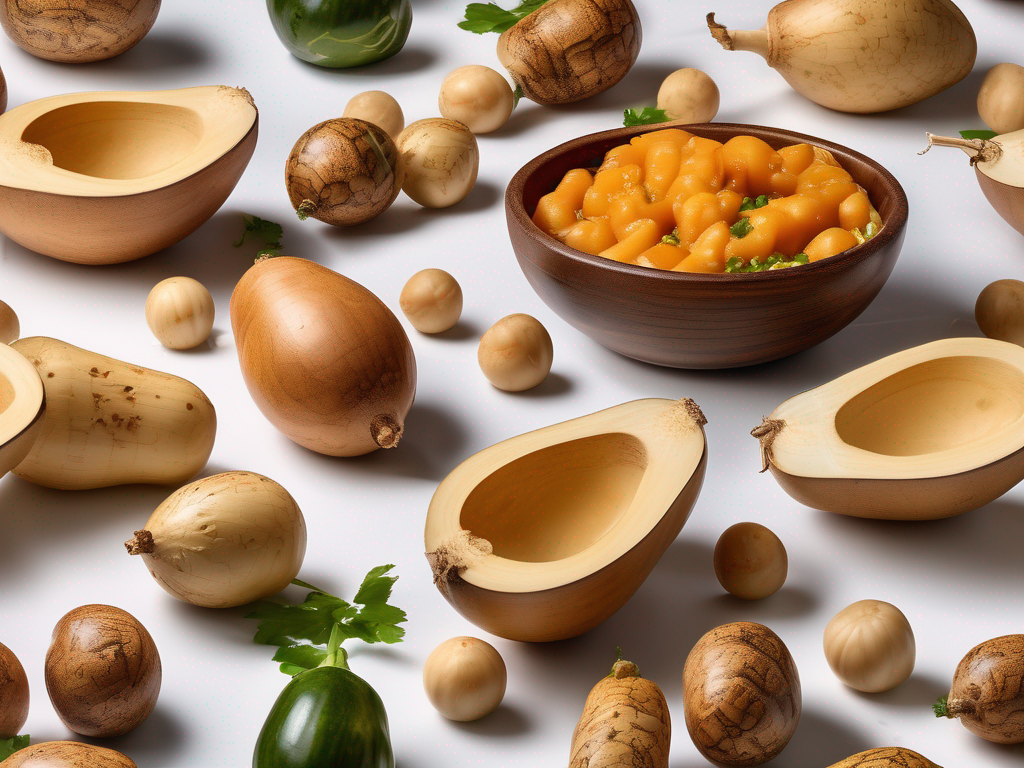
The Ultimate Guide to Properly Storing Calabash to Extend Its Shelf Life
Get Your Free Food Safety Cheat Sheet
30 most common foods with instant answers. Print it and stick it on your fridge—completely free!
The Ultimate Guide to Properly Storing Calabash to Extend Its Shelf Life
Calabash, also known as bottle gourd or opo squash, is a versatile and nutritious vegetable calabash commonly used in various culinary dishes. To fully enjoy its freshness and flavor, it is essential to store calabash properly. Improper storage can lead to premature spoilage and waste. In this comprehensive guide, we will explore the best practices for storing calabash to extend its shelf life. (Calabash)
Why Proper Storage is Important for Calabash
Proper storage of calabash is crucial for several reasons:
-
Preserve Freshness: Correct storage methods help maintain the vegetable's freshness, texture, and flavor.
-
Prevent Spoilage: Improper storage conditions can accelerate the spoilage process, leading to food waste.
-
Minimize Foodborne Illness: Storing calabash correctly reduces the risk of bacterial contamination and foodborne illnesses.
Selecting Fresh Calabash
Before diving into storage tips, it's essential to choose fresh calabash:
-
Look for calabash that is firm, heavy for its size, and free from blemishes or soft spots.
-
The skin should be smooth and uniform in color, without any mold or discoloration.
-
Avoid calabash with punctures, bruises, or signs of decay.
Proper Storage Techniques for Calabash
Follow these guidelines to ensure your calabash stays fresh for an extended period:
1. Room Temperature Storage
-
Store Whole Calabash: If you plan to use the calabash within a few days, you can keep it at room temperature in a cool, dry place away from direct sunlight.
-
Avoid Refrigeration: Whole calabash does not require refrigeration unless cut.
2. Refrigeration
-
Refrigerate Cut Calabash: Once cut, wrap the remaining calabash tightly in plastic wrap or place it in an airtight container before refrigerating.
-
Store in the Vegetable Drawer: Place the wrapped calabash in the vegetable crisper drawer of the refrigerator to maintain optimal humidity levels.
3. Freezing Calabash
-
Blanching: For long-term storage, calabash can be blanched before freezing. Blanching helps preserve the color and texture of the vegetable.
-
Package Properly: After blanching, cool the calabash quickly in ice water, drain, and then pack into airtight containers or freezer bags.
4. Avoiding Moisture
-
Dry Before Storage: Excess moisture can lead to mold growth. Ensure the calabash is dry before storing it in the refrigerator or freezer.
-
Check for Condensation: Periodically check stored calabash for any signs of moisture buildup and remove any excess moisture.
5. Rotation and Inspection
-
First In, First Out: Practice FIFO (First In, First Out) to use the oldest calabash first and prevent any items from being forgotten and spoiling.
-
Regularly Inspect: Check stored calabash regularly for any signs of spoilage, such as mold, soft spots, or off odors.
Conclusion
Properly storing calabash is essential to maintain its freshness, flavor, and nutritional value. By following the guidelines outlined in this guide, you can ensure that your calabash stays fresh for an extended period, reducing food waste and promoting food safety. Remember to select fresh calabash, utilize appropriate storage methods based on your usage timeline, and regularly inspect stored calabash for quality. With these tips, you can enjoy delicious calabash dishes with confidence and peace of mind. (Calabash)
Related Posts
Here are some other articles you might find helpful:
Authoritative Food Safety References
These agencies and university labs inform every tip and health precaution we publish.
USDA FoodKeeper – Cold Storage Guidelines
Official refrigerator, freezer, and pantry timelines maintained by the U.S. Department of Agriculture.
Visit USDA FoodKeeperFDA Produce Safety Rule & Grower Guidance
Field-to-fridge handling practices that prevent contamination of fruits, vegetables, and leafy greens.
Visit FDA Produce SafetyCDC Foodborne Illness Prevention Hub
Surveillance-backed guidance on pathogens, symptoms, and steps to reduce foodborne illness risk.
Visit CDC Food SafetyUC Davis Postharvest Technology Center
University research detailing optimal storage atmospheres for produce after harvest.
Visit UC Davis PostharvestPenn State Extension – Home Food Preservation & Safety
Peer-reviewed extension bulletins on safe canning, chilling, and reheating practices.
Visit Penn State ExtensionGet Your Free Food Safety Cheat Sheet
30 most common foods with instant answers. Print it and stick it on your fridge—completely free! Want more? Upgrade to the complete guide with 70+ foods.
Scan your food directly and get instant safety info using our AI-powered camera feature.